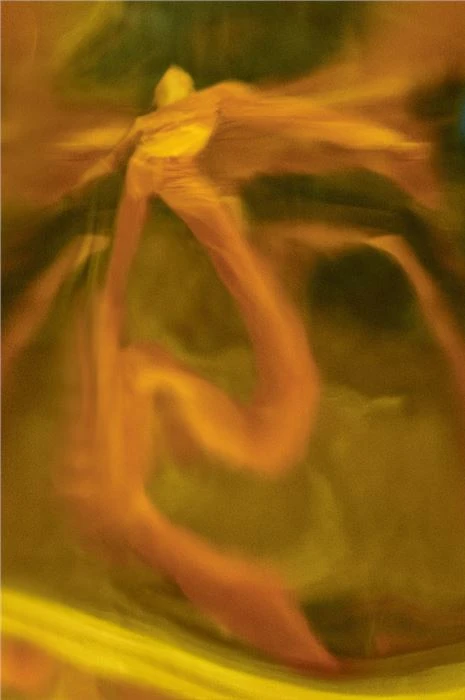Joan Mitchell, Sunflowers, 1990-91, oil on canvas in two parts. Courtesy of David Zwirner.
Art Basel, the renowned international art fair, is continually evolving at its original site to diversify the world of contemporary art.
Art Basel, often hailed as the premier art fair globally, boasts an extensive influence. It attracts those eager to buy art, discover new styles and artists, and engage with the event’s social prestige – it has indeed become a symbol of status. Known for its modern art emphasis, Art Basel has been a staple for over fifty years and now spans four locations. However, the Miami fair’s fame has begun to eclipse its counterparts, thanks to its celebrity encounters, exclusive gatherings, multimillion-dollar artworks, burgeoning galleries, and occasionally, a viral sensation like the banana duct-taped to a wall that fetched $120,000 in 2019. Yet, there’s a reason it’s named Art Basel; it originated in the Swiss city of Basel. The seminal Art Basel event recently concluded its 54th session, showcasing more than 285 galleries from forty nations, with twenty-two debuting at the fair this year.
This year’s Art Basel fair has undergone several significant changes. Notably, there has been an increase in the availability of valuable artworks, mainly from private collections, many of which had not been previously available on the market. Although sales have decreased from last year, they remained robust, including pieces by emerging artists and traditionally less costly mediums. For example, the second-highest reported sale was a work on paper, Arshile Gorky’s “Untitled (Gray Drawing (Pastoral)),” fetching $16 million. Artwork prices were set at more conservative levels compared to previous years, with total sales nearing $250 million, roughly half of the previous year’s figure. However, the number of visitors increased, with Art Basel 2024 drawing 91,000 attendees, an increase from 82,000 in 2023. This rise in attendance may be attributed to changes in the fair’s leadership and structure, marking the first year under the complete oversight of Maike Cruse, a significant appointment by Noah Horowitz, who became the fair’s chief executive in 2022 after directing the Miami Beach edition.
This year’s fair showcased the usual sectors: Galleries, Feature, Statements, and Edition, along with an expanded Unlimited program presenting approximately 70 large-scale installations and performances. Joan Mitchell’s diptych “Sunflowers” generated buzz with its high estimates and sold for $20 million, similar to the notable presence of Yayoi Kusama’s work. However, artists less known internationally also had their moments to shine. For instance, Maria Hassabi’s installation “Mirrors,” featured in the Unlimited section, included a series of photographs of dancers in motion against a backdrop of acrylic gold mirrors. This setup blurred the distinctions between subject and viewer, stillness and movement, space and time, creating an overwhelmingly captivating, ethereal, and almost theological experience in its arrangement and hues.


The fair set itself apart with an expanded city-wide program, featuring eco-art pioneer Agnes Denes’s renowned land artwork, “Honoring Wheatfield – A Confrontation,” at Messeplatz. The most significant change for many was the revamped public art sector, Parcours, curated by Stefanie Hessler. It offered continuous artistic events and showcases in a new format. Instead of dispersing across Basel, Parcours was centralized along Clarastrasse, linking Messe Basel to the Rhine River, and utilized vacant shops, open businesses, public spaces, and Hotel Merian. A brief stroll from the Rhine, George Bak and Roger Haas inaugurated the first digital art fair, Digital Art Mile. Concurrently, the fair’s free Conversations series, now in its 20th year, was curated by Kimberly Bradley, emphasizing the art world’s future direction.
Although these changes might appear minor, they are addressing a larger issue within Art Basel: its tendency towards exclusivity. Across all its locations, the fair has cultivated a luxurious image that often excludes those lacking ample time and wealth. There is a common overlap between artists at Art Basel and the Venice Biennale, the only other fair of comparable prestige. The general belief is that Venice is for immersive experiences – such as performances, videos, installations – and Basel for purchasing – paintings, drawings, sculptures. However, this year’s Art Basel is challenging the “See in Venice, buy in Basel” notion. The fair’s historical lack of diversity among artists has been criticized, but there is a gradual shift towards inclusivity, with the aforementioned mentality contributing significantly. Consider the Paraguayan Guaraní artist Julia Isídrez; just a year ago, the ceramicist, inspired by local fauna, had no representation. Living in a secluded part of Paraguay, she was unreachable by phone when Thiago Gomide’s Brazilian gallery sought her out. Now featured at both the Venice Biennale and Art Basel, the value of her work has skyrocketed, and there’s a growing demand for her pieces. The years when these two events overlap provide deeper insights into the art world’s trends than either event alone. The full impact of this year’s Art Basel will remain unclear until the Venice Biennale concludes in November.
